Mastering Tesla PDR: Non-Invasive Repairs for Panels and Doors
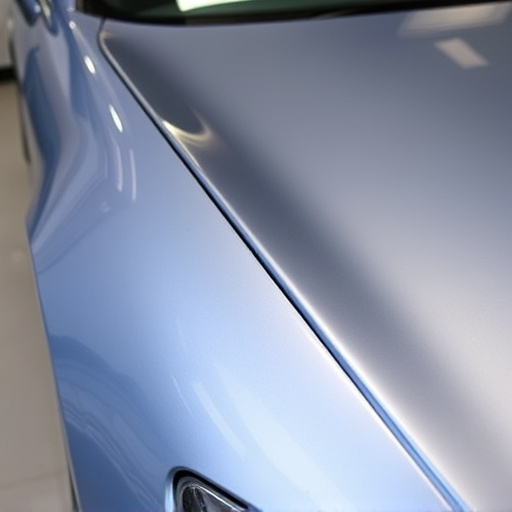
Tesla PDR (paintless dent repair) is a non-invasive auto body repair method that preserves original…….
Welcome to an in-depth exploration of Tesla PDR, a cutting-edge approach to automotive dent repair that is transforming the way we restore damaged vehicles. In today’s fast-paced world, where convenience and minimal disruption are highly valued, paintless dent repair (PDR) has emerged as a game-changer in the automotive industry. This article aims to provide a comprehensive guide to Tesla PDR, its benefits, applications, and its impact on both local markets and the global automotive landscape. By delving into this innovative process, we will uncover why it is not just a repair technique but a significant advancement in vehicle care.
Tesla PDR, at its essence, is a non-invasive method of repairing dented or damaged vehicle bodies without the need for traditional painting or extensive body work. It involves specialized techniques and tools to gently push and mold the exterior paneling back to its original shape, effectively removing dents and scratches. This process preserves the factory finish, ensuring that the repaired area blends seamlessly with the rest of the vehicle’s body.
The key components of Tesla PDR include:
Specialized Tools: PDR technicians utilize a range of tools like plastic hammers, mallets, and specialized bars designed to deliver precise pressure points for dent removal.
Accessories and Insertion Tools: These are used to insert under the damaged area, providing leverage for lifting and reshaping the panel.
Suction Cups: An essential tool for holding and lifting panels during the repair process, ensuring minimal contact and damage to surrounding areas.
Heaters and Coolers: Depending on the technique, heaters are used to soften the paint and cool tools to control the temperature and prevent paint cracking.
Pressure Regulators: These devices ensure precise pressure application, critical for successful dent removal without damaging the vehicle’s body or paintwork.
The concept of PDR is not entirely new, with early forms dating back to the 1960s. However, Tesla PDR has evolved significantly over time, becoming a preferred choice among professionals and enthusiasts alike. Its evolution can be attributed to advancements in technology, a growing demand for convenient repairs, and environmental considerations.
Historically, traditional dent repair required removing damaged panels, sanding, painting, and re-fitting, which was time-consuming and labor-intensive. PDR offered a faster alternative, saving on materials and reducing downtime. As automotive finishes became more sophisticated, the need for precise and non-invasive repair methods grew, leading to the advanced techniques used in Tesla PDR today.
Tesla PDR has transcended geographical boundaries, becoming a global phenomenon. Its adoption varies across regions, influenced by factors such as local regulations, consumer preferences, and availability of specialized training and equipment. Here’s a snapshot of its impact worldwide:
North America: The United States and Canada have seen widespread adoption, with many leading automotive service centers offering PDR services. This region’s strong culture of vehicle customization and repair has fueled the growth of PDR.
Europe: Countries like Germany, the UK, and France have embraced Tesla PDR, particularly for its efficiency and environmental benefits. The European Union’s strict emission standards encourage lighter, more efficient body structures, making PDR an attractive solution.
Asia Pacific: Japan and South Korea are at the forefront of PDR innovation, with technicians refining techniques to meet the region’s high standards for vehicle aesthetics. China, too, is witnessing a surge in demand due to its burgeoning automotive industry.
Rest of the World: The Middle East, Brazil, and certain African nations are also incorporating Tesla PDR into their automotive service offerings, aligning with global trends.
Regional variations in PDR adoption and practices can be attributed to several factors:
| Region | Key Trends |
|---|---|
| North America | High demand for quick, cost-effective repairs; specialized training programs widely available. |
| Europe | Stricter environmental regulations; focus on precision and minimal paint alteration. |
| Asia Pacific | Rapidly growing automotive markets; emphasis on advanced technologies and customization. |
| Rest of the World | Increasing awareness of PDR benefits; local businesses adapting global practices. |
The Tesla PDR market is experiencing robust growth, driven by several economic factors:
Growing Automotive Industry: The global automotive sector’s expansion, particularly in developing regions, has led to an increase in vehicle ownership and corresponding repair and maintenance needs.
Convenience and Efficiency: Consumers appreciate the convenience of PDR, which offers faster turnaround times compared to traditional body shop repairs, reducing downtime for vehicle owners.
Cost-Effectiveness: While initial setup costs for PDR equipment can be high, the technique is more cost-efficient in the long run, as it reduces material waste and labor requirements associated with conventional repairs.
The PDR industry attracts investments from various sources:
Automotive Service Centers: Established body shops and repair facilities are investing in PDR equipment to expand their service offerings and tap into a growing customer base seeking convenient, high-quality repairs.
Startups and Mobile Services: Newer businesses, often operating as mobile units, cater to customers who prefer on-demand, at-home or workplace repairs, offering PDR services with added convenience.
Franchises and Chain Stores: Major automotive service chains are recognizing the benefits of PDR and incorporating it into their franchise models, ensuring consistent quality and customer satisfaction across locations.
Technological advancements have been instrumental in refining Tesla PDR techniques and making them more accessible and efficient:
Digital Tools and Software: The integration of digital technology has improved precision and efficiency. Specialized software allows technicians to visualize dent patterns, plan repair strategies, and monitor progress, ensuring consistent results.
Advanced Suction Cup Technology: Modern suction cups are designed with advanced materials and mechanisms, providing better control and minimizing damage to the vehicle’s surface during the lifting process.
Automated Tools: Automated hammering and mallet systems offer precise control, reducing the risk of human error and ensuring consistent dent removal results.
Heating and Cooling Systems: Advanced heating elements and cooling controls enable technicians to manage paint temperature more effectively, preventing cracks and ensuring a smoother finish after repair.
The future of Tesla PDR holds immense potential for further innovation:
AI-Assisted Repair: Artificial intelligence could revolutionize PDR by analyzing dent patterns and suggesting optimal repair strategies, improving efficiency and reducing human error.
Robotic Assistance: Robotic arms equipped with advanced sensors and tools could enhance precision, allowing for complex repairs in hard-to-reach areas.
Sustainable Materials: Researchers are exploring the use of eco-friendly materials and methods to make PDR even more environmentally sustainable.
Tesla PDR, like any automotive repair service, is subject to various policies and regulations aimed at ensuring safety, quality, and consumer protection:
International Standards: Organizations like ISO (International Organization for Standardization) set global standards for paint and coating applications, which indirectly influence PDR practices by defining acceptable repair methods.
Regional Regulations: Each country or region may have its own set of regulations governing automotive repairs. For instance, the EU’s REACH (Registration, Evaluation, Authorisation, and Restriction of Chemicals) regulation ensures the safe use of chemicals in vehicle manufacturing, including PDR processes.
Local Licensing and Registration: Automotive repair businesses must obtain licenses and registrations from local authorities to operate legally, ensuring they meet specific safety and quality standards.
Policymakers play a crucial role in shaping the PDR industry:
Safety Standards: Regulations ensure that PDR techniques do not compromise vehicle safety or structural integrity. They mandate the use of approved tools and materials, promoting consumer confidence.
Quality Control: Standardized practices ensure consistent repair quality across different service providers, fostering a competitive yet reliable market.
Environmental Considerations: Many regulations encourage eco-friendly practices, pushing PDR as an environmentally conscious alternative to traditional body work.
Despite its numerous benefits, Tesla PDR faces certain challenges that have limited its widespread adoption:
Initial Setup Costs: High upfront investment in specialized equipment can deter small businesses and individual technicians from entering the market.
Training Requirements: Skilled PDR technicians require extensive training, which can be a barrier to finding qualified personnel.
Customer Awareness: Many consumers are unaware of PDR’s capabilities, favoring traditional body shop repairs due to misconceptions or lack of information.
Addressing these challenges is crucial for the industry’s growth:
Government Incentives: Governments can offer tax incentives or grants to encourage businesses to adopt PDR equipment, making it more accessible.
Training Programs: Establishing comprehensive training institutions and online courses can help meet the demand for skilled technicians, ensuring a competent workforce.
Public Awareness Campaigns: Educating consumers about PDR’s advantages through campaigns and workshops will increase its appeal and foster market growth.
Here are three case studies highlighting the successful integration of Tesla PDR into various scenarios:
Case Study 1: Fleet Management Company, USA
A major fleet management company operating in the US encountered frequent dent and scratch damage to its vehicle fleet due to urban driving conditions. They implemented a Tesla PDR program, equipping their maintenance facilities with the necessary tools and training their technicians. The result was a significant reduction in repair costs and downtime, as well as an improved customer satisfaction rating among drivers who appreciated the swift and discreet repairs.
Case Study 2: Mobile Repair Service, UK
A mobile repair service based in London noticed a growing demand for on-demand, at-home dent repairs. They invested in portable PDR kits and trained their technicians to offer this service. The business experienced rapid growth, attracting customers who valued the convenience of having their vehicles repaired where they were parked, be it at work or home.
Case Study 3: Luxury Car Dealership, Germany
A luxury car dealership in Berlin wanted to enhance its after-sales services and cater to the demanding preferences of its high-end customer base. They introduced Tesla PDR as a premium service, offering quick and precise dent removal for their clients’ vehicles without compromising the factory finish. The initiative was well-received, attracting new customers and fostering brand loyalty among existing ones.
The future of Tesla PDR holds immense potential across various sectors:
Automotive Aftermarket: As the global aftermarket for automotive parts and services continues to grow, PDR will play a pivotal role in ensuring vehicle retention rates and customer satisfaction.
Electric Vehicle (EV) Repair: With the rise of EVs, PDR technicians will need to adapt their skills to accommodate unique repair challenges posed by these new vehicles’ lightweight construction and advanced finishes.
Remote and On-Demand Services: The trend towards remote work and on-demand services is likely to continue, driving the demand for mobile PDR units equipped with advanced tools for efficient, convenient repairs.
To capitalize on emerging trends, industry players should:
Adapt to EV Technologies: Invest in training and equipment to cater to the specific needs of EV repair, ensuring technicians stay ahead of the curve.
Partner with Ride-Sharing Companies: Collaborating with ride-sharing businesses can provide a steady stream of mobile PDR services, catering to the repair needs of shared vehicles.
Embrace Digital Integration: Leverage digital tools and platforms to streamline operations, improve customer engagement, and offer remote consulting services.
Tesla PDR has emerged as a transformative force in the automotive industry, offering an efficient, cost-effective, and environmentally friendly alternative to traditional body work. Its global impact is evident in the diverse range of regions adopting and refining this technique to meet local needs and preferences. As technology continues to evolve, Tesla PDR will only become more sophisticated, accessible, and integral to the automotive restoration landscape.
The future holds immense potential for growth, with opportunities arising from the expanding automotive market, the rise of electric vehicles, and the ongoing demand for convenient, efficient repair solutions. By addressing challenges and embracing emerging trends, the Tesla PDR industry is poised to lead the way in vehicle care, ensuring that cars not only look their best but also remain in top condition throughout their ownership cycle.
Q: What makes Tesla PDR different from traditional dent repair?
A: Tesla PDR is non-invasive and uses specialized tools to gently push and mold the exterior panel back to its original shape, preserving the factory finish. Traditional methods often involve more aggressive techniques, including cutting, sanding, and repainting, which can be time-consuming and may alter the vehicle’s original appearance.
Q: Is Tesla PDR suitable for all types of vehicles?
A: Yes, Tesla PDR is versatile and can be applied to most vehicle makes and models, from modern SUVs to classic cars. However, the technique’s effectiveness depends on factors like the severity of damage, the type of paint and finish, and the vehicle’s body structure.
Q: How long does a Tesla PDR repair take?
A: Repair times vary depending on the size and complexity of the dent. Minor dents can be repaired in 30 minutes to an hour, while more significant damage may take up to several hours, including preparation, repair, and final checks.
Q: Is it environmentally friendly?
A: Absolutely. Tesla PDR is an eco-friendly process as it avoids the need for extensive paintwork or material waste associated with traditional body shop repairs. The technique uses minimal materials and can reduce a vehicle’s carbon footprint during restoration.
Q: Can I get my car repaired using Tesla PDR at a regular service center?
A: Many regular automotive service centers now offer Tesla PDR as an additional service to cater to customer demands. If your local center doesn’t provide this service, you can find specialized PDR shops or mobile services in your area through online searches or referrals.

Tesla PDR (paintless dent repair) is a non-invasive auto body repair method that preserves original…….
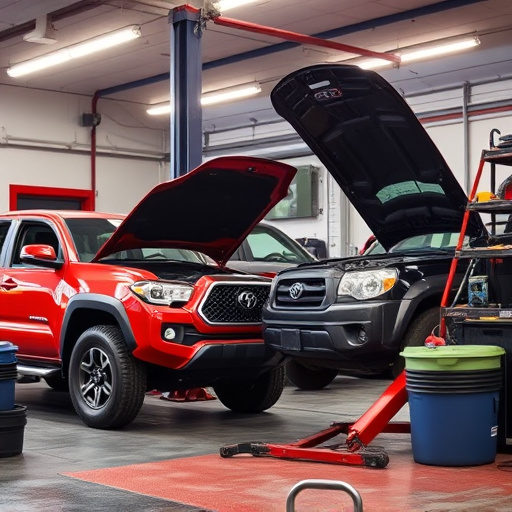
Tesla PDR (paintless dent repair) is a cutting-edge automotive technology for repairing car bodies w…….
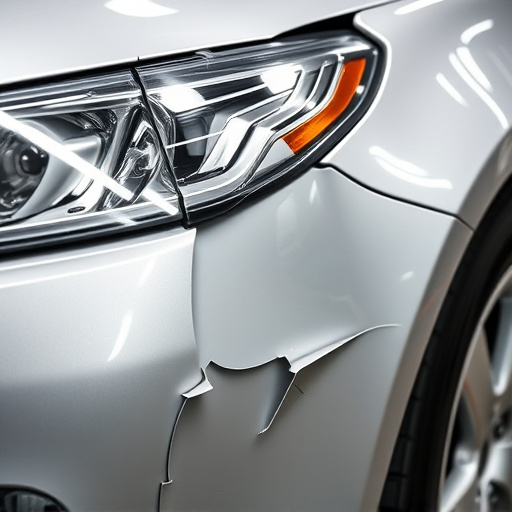
Tesla PDR (paintless dent repair) is a revolutionary car restoration method using specialized tools…….
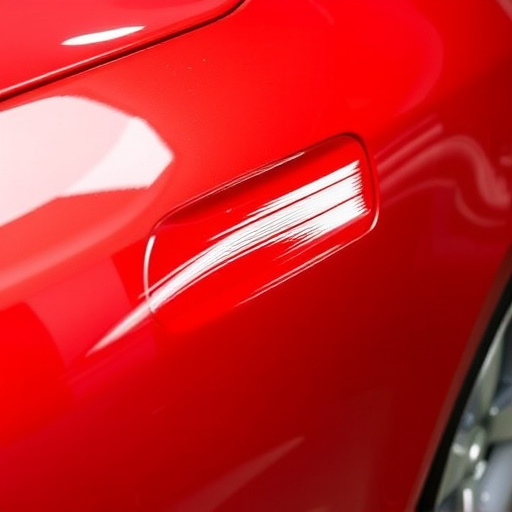
Meticulous pre-disassembly inspection and specialized tools are crucial for Tesla PDR, enabling skil…….
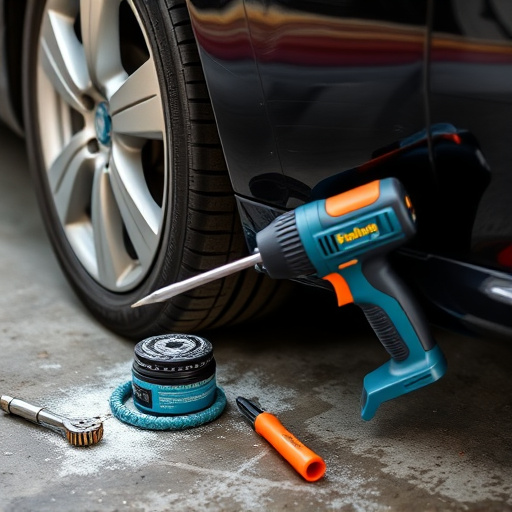
Tesla PDR (paintless dent repair) preserves original factory finishes on vehicles by gently working…….
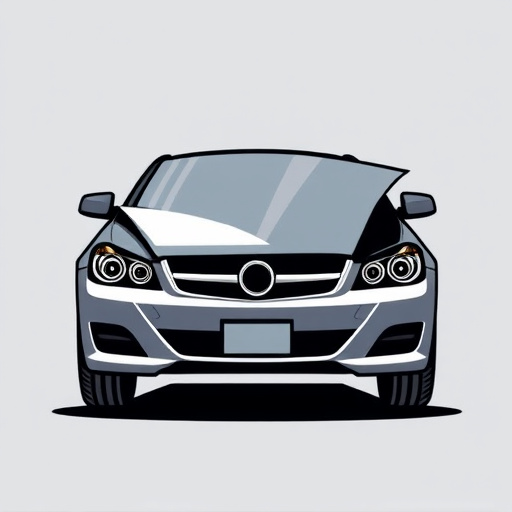
Tesla PDR (paintless dent repair) requires specialized tools and skills to handle advanced materials…….
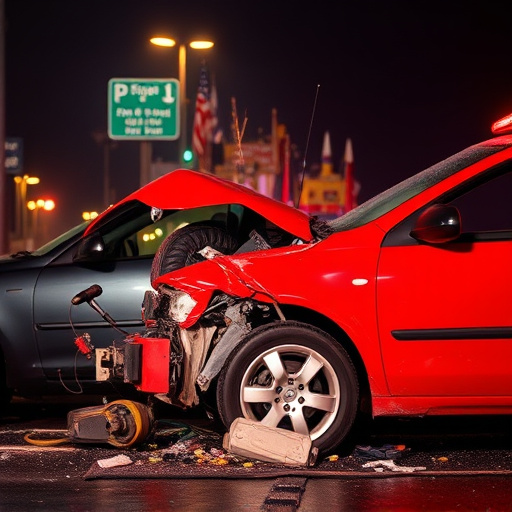
Tesla PDR (paintless dent repair) is a modern, eco-friendly car body repair method using specialized…….
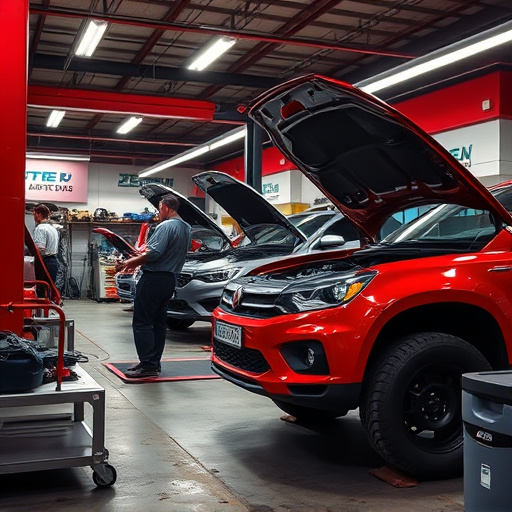
Tesla PDR (paintless dent repair) is a cutting-edge auto body restoration technique that preserves o…….
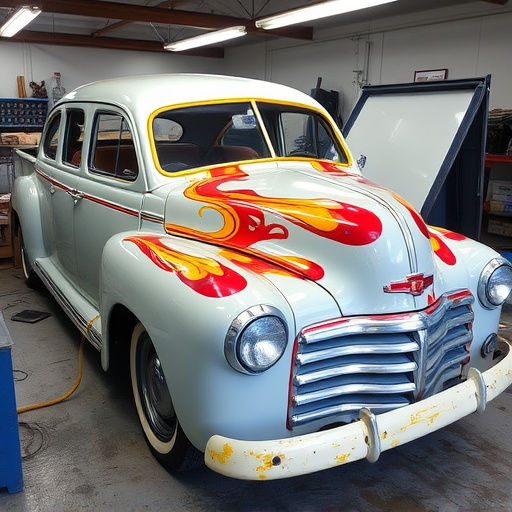
Tesla PDR (paintless dent repair) relies on specialized tools for repairing dents and scratches with…….